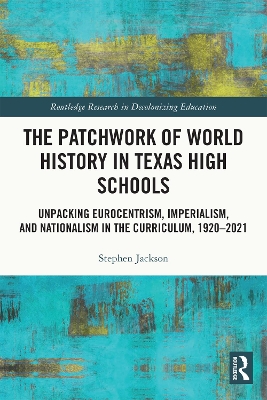Routledge Research in Decolonizing Education
1 total work
This book traces the historical development of the World History course as it has been taught in high school classrooms in Texas, a populous and nationally influential state, over the last hundred years.
The author argues that the course has dynamically evolved to reflect a patchwork of competing visions that have intersected over the past century, with each new framework partially but never completely erasing or replacing those that came before. The first part of the book presents an overview of the World History course supported by a numerical analysis of textbook content and public documents, whilst the second focuses on the depiction of non-Western peoples, and persistent narratives of Eurocentrism, imperialism, and nationalism. It ultimately concludes that a more global, accurate, and balanced curriculum is possible, despite the tension between the ideas of professional world historians, who often de-center the nation-state in their quest for a truly global approach to the subject, and the historical core rationale of state-sponsored education in the United States: to produce loyal citizens.
Offering a new, conceptual understanding of how colonial themes in world history curriculum have been dealt with in the past and are now engaged with in contemporary times, it provides essential context for scholars and educators with interests in the history of education, curriculum studies, and the teaching of World History in the United States.
